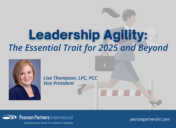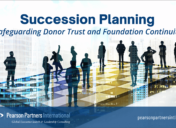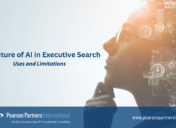Why Business Chooses North Texas
A Perspective from Dale Petroskey, President and CEO, Dallas Regional Chamber

From L to R: Dale Petroskey, Dallas Regional Chamber; Pat Priest, Dallas Regional Chamber; Renee Arrington, Pearson Partners; and Keith Pearson, Pearson Partners
People in Dallas/Fort Worth already know what many others in America and around the world are learning: DFW is a great place to live and work. With a central location, diverse base of business and business-friendly environment, DFW has a thriving economy. Companies and workers are moving here in droves, and the Dallas Regional Chamber is working hard to support the area’s rapid business and population growth.
At Pearson Partners’ Q2 2015 Spotlight SeriesSM breakfast, Dale Petroskey, president and chief executive officer of the Dallas Regional Chamber, shared why the Dallas/Fort Worth metroplex is a magnet not only for business, but also for people looking for successful careers and a vibrant community to call home.
Dallas Regional Chamber
With 2,000 member companies and a 100-year history, the Dallas Regional Chamber is the oldest and largest chamber in Dallas. Focused on economic development and improving the area’s quality of life, the chamber works to bring more companies and jobs to North Texas. It strives to ensure a high-quality workforce by working on education and workforce issues, and supports the growing community’s infrastructure, such as roads, bridges, airports and water.
Rapid Growth
Businesses across the United States are realizing that Dallas/Fort Worth is the best place to be. There’s nowhere else in the country like it.
DFW is the fourth-largest region in America, with Dallas alone ranking ninth and Fort Worth ranking 16th. Together, the two metropolitan areas are home to nearly seven million people—that’s more residents than can be found in 38 states combined. In fact, if DFW were a state, it would be the 12th most populous in the nation.
Last year, Dallas added 137,000 new jobs—more than any other city in the nation. Although Texas lost 400,000 jobs during the recent recession, it has since gained back 1.2 million jobs—more than the other 49 states combined. About 10,000 people move to Texas every week to reap the rewards of this job growth as well as the region’s robust economy and quality of life.
Nearly 70 companies moved their headquarters to the DFW area in the last five years. Toyota pulled up stakes in California after 57 years, bringing 4,000 jobs to Dallas/Fort Worth. San Diego’s Active Network brought 1,000 jobs to downtown, where Omnitracs, another San Diego tech company, also relocated and contributed another 400 jobs. Kubota is bringing 400 jobs to Grapevine this year. State Farm and Liberty Mutual are among the more than 800 companies expanding their operations in the metroplex within the last five to six years.
Success Creates Momentum
What makes DFW a global business hot spot? Among the biggest attractions are both national and international airports offering non-stop flights to virtually anywhere in the world. Every major U.S. city is within a four-hour flight from Dallas, and in fact, the two biggest domestic and global airlines are based here: Southwest and American.
Other draws include Texas’ business-friendly “right-to-work” status, low workers’ comp costs and a lack of state income tax. DFW’s convenient location in the central United States is enhanced by an excellent highway system for moving goods and services, a growing commuter rail system and very likely a high-speed rail line between the metroplex and Houston within seven years.
Texas has the 13th largest economy in the world—larger than those of Spain, Mexico, the Netherlands, Saudi Arabia, Argentina, Poland and Belgium. DFW’s economy alone is bigger than those of Austria, the UAE, South Africa and Singapore.
The “Texas Triangle”—spanning DFW, Houston, San Antonio and Austin—comprises 75 percent of the economic action in the state. As of 2014, DFW leads the nation in job growth, with manufacturing and high-tech at the forefront. The area’s largest trading partner is China, with $27 billion in trade, followed by South Korea in a distant second place.
Despite all these impressive statistics, business leaders across the nation and around the world have been slow to recognize DFW as the economic powerhouse that it is. While our diverse industry base means the metroplex lacks a defined “story”—for example, Houston is synonymous with “energy” and Silicon Valley with “technology”—that diversification has also helped the area weather economic storms, because our economy relies on multiple sectors rather than just one or two.
The Dallas Regional Chamber aims to help DFW market itself to businesses as well as the talent they need to hire, helping to draw industry leaders as well as the best young minds away from Silicon Valley, Washington and Boston—and home to North Texas.
Pearson Partners Spotlight SeriesSM Breakfast
Save the date for our next Spotlight SeriesSM breakfast scheduled for September 15. Look for details and invitations in August. Did you miss one of our Spotlight SeriesSM events? Check out summaries of past events.
Related Posts
- ← Searchlight Newsletter – Q2 2015
- TweetChat: Executive Search & Boards of Directors – August 25, 2015 →














